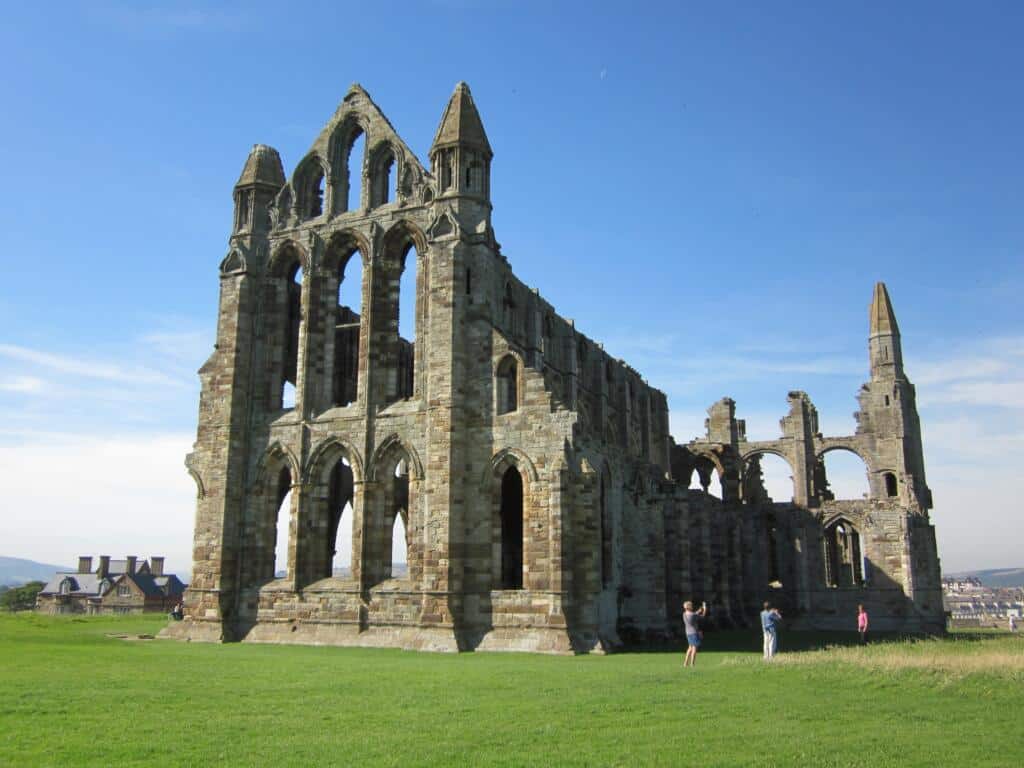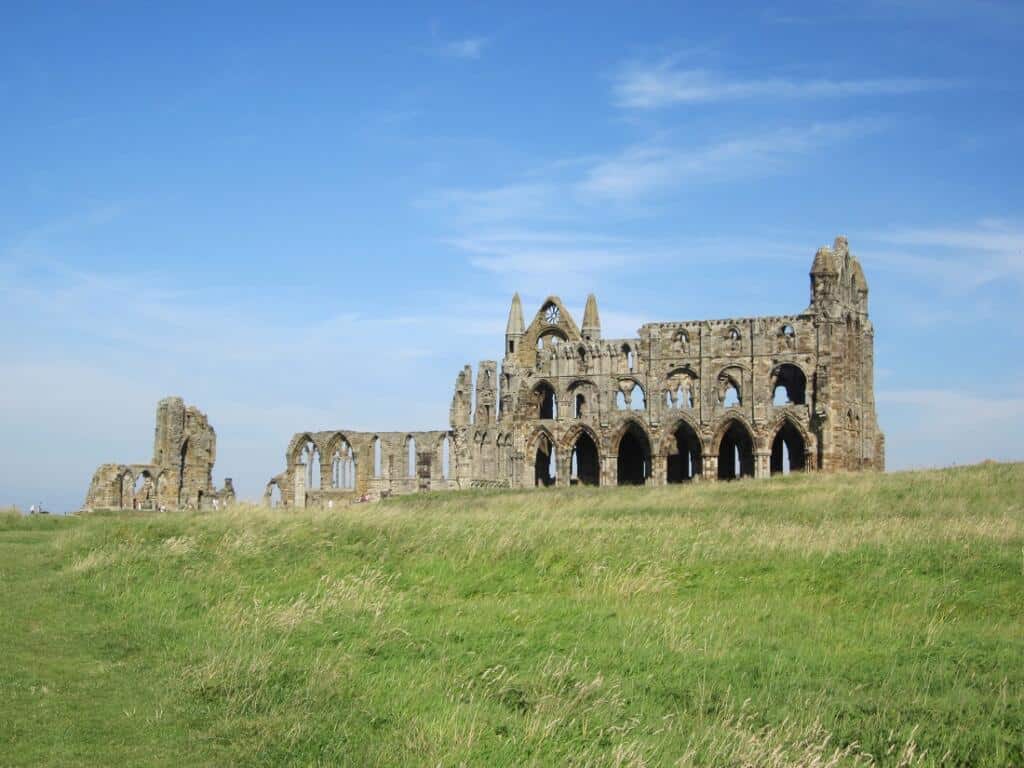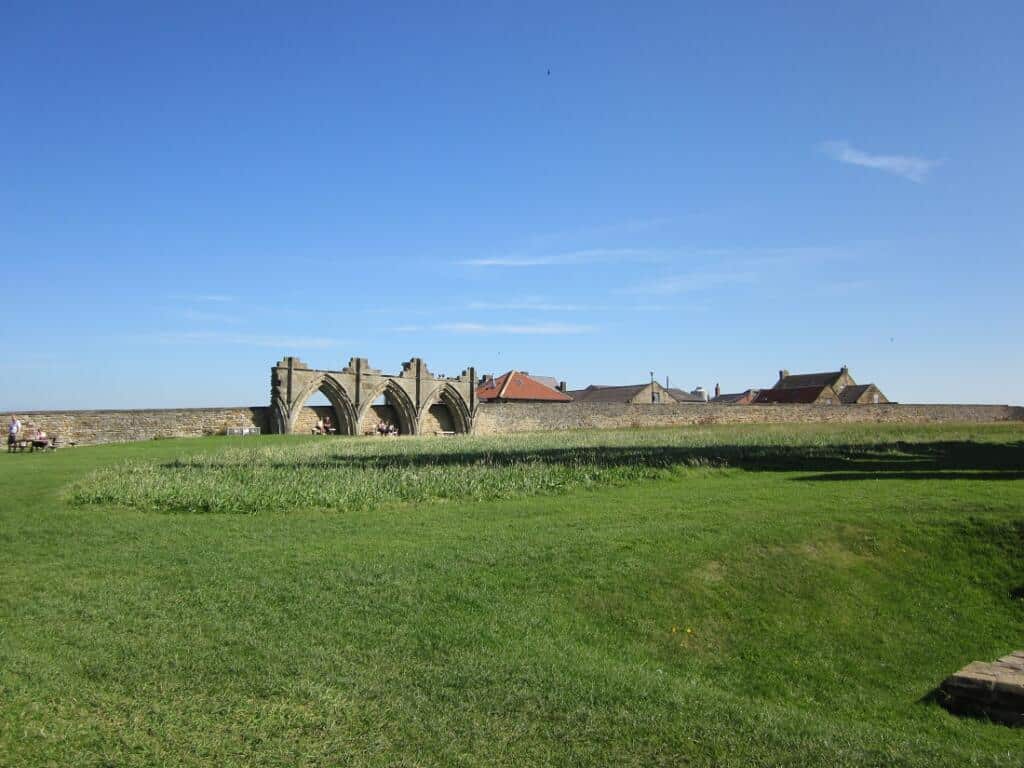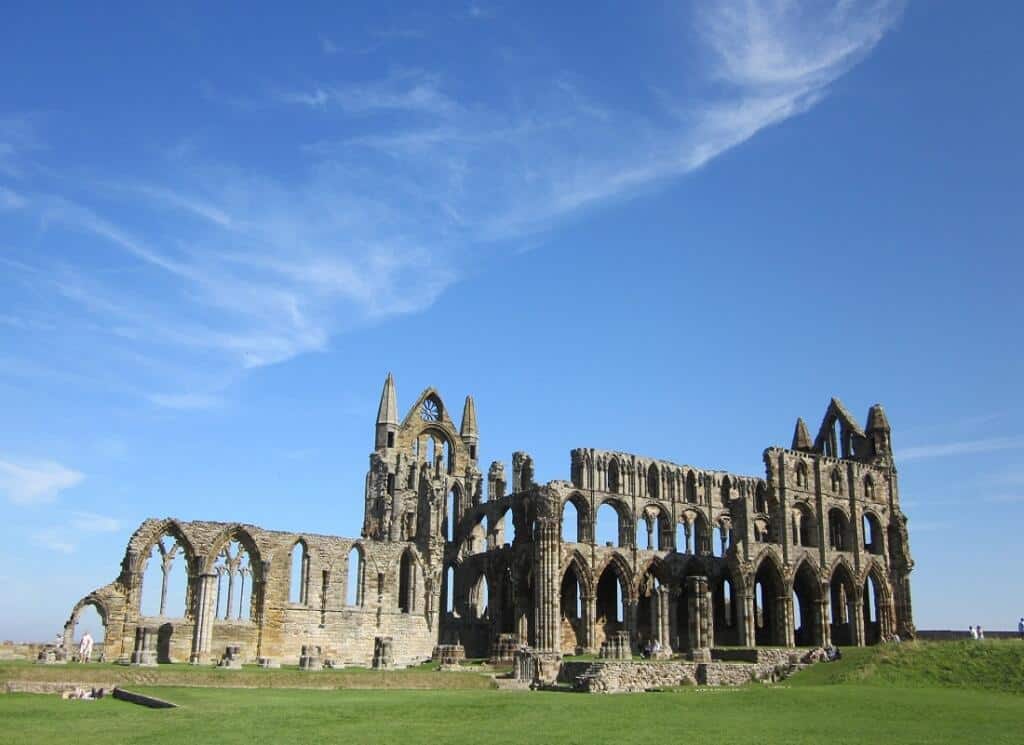Explore England’s Historic Whitby Abbey
Perched atop the cliffs and gazing out over the sea, Whitby Abbey appears frozen in time. But this site has a long and rich history, dating back some 3000 years ago. It has been a sacred place for many different communities and a seat of power for centuries. Today, the ruined Abbey stands as a reminder of this fascinating past.
If we look close enough, we can see the remains of an Anglo-Saxon monastery buried beneath the soaring arches. The stories of the saints, poets, and miracles associated with this monastery have been passed down and continue to inspire us today. This is a place with a truly unique and remarkable history.
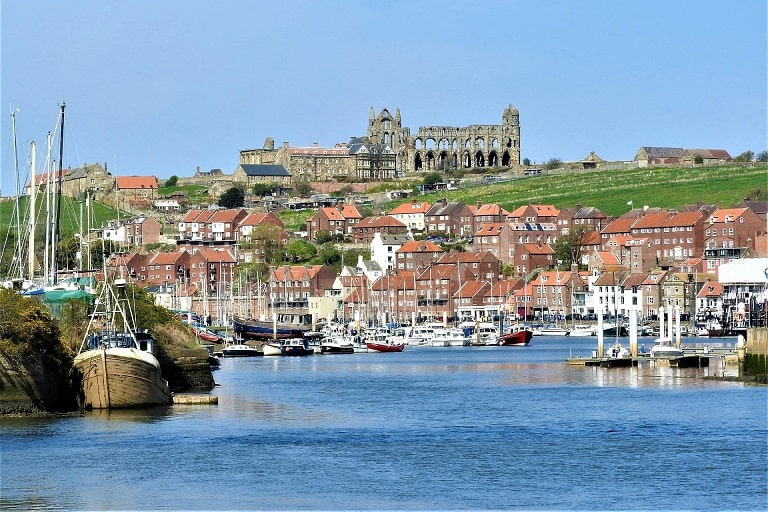
This post may contain affiliate links. Please read our disclosure and privacy policy for more information.
The Abbey’s History: A Brief Overview
Most agree that people occupied the headland east of Whitby during the late Bronze Age. Archeologists have found remains of a small hut inside an earthen enclosure just near the top of the cliff. There are reports that Romans built their signal station during the 3rd century AD. It was part of a more extensive network that spanned from Goldsborough north to Ravenscar south.
When the Romans left, the area remained unoccupied until many Anglians settled there in the 7th century. Known as the Streaneshalch, this community was centered around a monastery founded by the Northumbrian King Oswy in 657. The monastery became one of England’s most important religious sites and played a significant role in spreading Christianity.
The St. Hilda’s Monastery: The Place for Nuns and Monks
St. Hilda’s Abbey, or the monastery of Streaneshalch, was founded in 657 AD by Hilda, the daughter of an Anglian nobleman. The monastery was home to a community of monks and nuns who followed the Rule of St. Benedict. Hilda, the most famous abbess, ruled the monastery from 657 to 680. Under her leadership, the monastery flourished and became a center of learning. The monastery was home to a community of monks who lived and worked together, following the rules set out by St Benedict, in the mid-7th century.
There are two primary sources for the history of Streaneshalch. These are the Ecclesiastical History of the English People, completed about 731 by the Venerable Bede, a monk from St Paul’s Monastery at Jarrow on the Tyne, and A Life of Pope Gregory the Great by an anonymous monk of Streaneshalch. These documents give a sneak peek into life in the monastery.
About St. Hilda
Venerable Bede, an 8th-century historian, wrote the history of St. Hilda’s life. She was born the great-niece of the Northumbrian King Edwin. Edwin’s royal court raised her with her sister when her father was killed.

By James Clark – Hartlepool Art Gallery – People Choice – 12 Aug – 17 Sept 2006, photograph by Yaffa
St. Hilda became a nun when she was 33 years old. She worked as an abbess until she retired to found St. Hilda’s monastery, supported by Oswiu, the Anglian King of Northumbria. The Northumbrian royal family’s gratitude for the King’s loyalty to them was long-lasting, and several dynasty members were buried at St. Hilda’s monastery.
St. Hilda’s monastery served an essential role in protecting and promoting Christianity in England during the 7th and 8th centuries. St. Hilda was so revered that royalty and nobility sought her counsel. She was a key figure in establishing monasticism in England, and her influence can still be seen in English monastic communities today.
The Synod
A Synod was established in AD 664. The theme was to help reconcile the stark differences between the Celtic and Roman Christian strains. This Synod was held at St. Hilda’s monastery in Whitby. The question, in this case, was based on determining the ideal date to celebrate Easter.
Synod: An assembly of the clergy and sometimes also the laity in a diocese or other division of a particular Church.
The Celtic Christian tradition of determining the date of Easter was not the same as the one used in Roman tradition. So, the Synod was tasked with deciding which practice was best to follow. Hilda’s reputation meant that she held a great deal of sway over the outcomes of the Synod. Ultimately, the Roman tradition won out and changed the course of English history. For Hilda, her reputation for wisdom and fairness meant that both sides respected her. Her monastery continued to be a center for learning and religious scholarship for many years. Hilda preferred the Celtic custom. However, Oswiu, the Northumbrian king, was the ultimate judge. King Oswiu judged in favor of Roman practice.
King Oswiu’s decision solidified the Pope’s authority over the Church in Britain. For almost 900 years, it remained like that until Henry VIII overturned it.
Though the exact date is unknown, it is believed that the monastery and settlement at Whitby departed sometime in the 9th century due to raids by Vikings. A new settlement was then established near the harbor. This new settlement took on the name Whitby.
Whitby – The Next Phase
The headland remained uninhabited until sometime in 1078 when a Benedictine monastery was established there under the supervision of a monk named Reinfrid. The only sign of life on the headland had been the occasional traveler passing through before this. However, with the establishment of the monastery, monks began to take up residence on the headland, slowly becoming populated once again. This new monastery split into two establishments—one at Whitby and the other at St.Mary’s Abbey, York.
There are conflicting reports of the Whitby monastery reusing the Saxon ruins on the headland or building their timber structures on top of the ones they found there. However, the first stone structure the monks put up was the church. This church was built around 1100. Not only did they make a church for themselves. They also established a parish church for the region’s civilians because religion was important during this period.
Religion played a significant role in everybody’s life back then, so it was beneficial to have a Protestant place of worship nearby. Not everyone could read or write, so sermons were critical to attend.
At churches, people would learn about God and how to live their lives and be better people. The monks saw an opportunity when they noticed there wasn’t a parish church nearby and took advantage of it. They helped spread their own religious beliefs and strengthened the community as a whole.
A more significant section of the church was reconstructed in the 12th century, with construction beginning sometime around 1225. However, only a portion of the new, larger church was completed before funds were finished. Work on the church resumed more than 100 years later and was completed in the 1500s.

The Henry VIII Era
Henry VIII’s suppression of Whitby Abbey in 1539 destroyed the monastic structures on the church’s south side. Sir Richard Cholmley then acquired the site. He changed the abbot’s lodging into a house named Abbey House. One of Sir Richard’s descendants, Sir Hugh Cholmley I, was a Royalist supporter during the Civil War. This resulted in Parliamentary soldiers capturing and ransacking Abbey House.
When the war was over, Sir Hugh’s son – also going by the name Hugh did complete restoration work on the house. Yet, he was able to add a new wing, the Banqueting House. Consequently, visitors to Whitby Abbey can still see traces of its monastic past despite the extensive damage over the centuries.
The Story Of Dracula At Whitby Abbey
The church at Abbey was abandoned entirely, transforming into a romantic clifftop ruin. As Whitby’s transformation into one of the busiest resort destinations during the 1900s continued, the Abbey’s popularity as a tourist destination also soared.
Bram Stoker’s 1897 novel Dracula propelled the allure. The novel uses the Abbey as the setting for the opening scenes. Today, the ruined Abbey is one of Whitby’s most popular attractions, drawing visitors worldwide. Standing on the cliff top and gazing out at sea, it’s easy to see why this place has inspired many stories. Bram Stoker visited Whitby in 1890 and was immediately drawn to its eerie atmosphere.
The imposing ruins of Whitby Abbey, sitting atop a cliff overlooking the sea, provide the perfect backdrop for his tale of terror. Stoker also got inspiration from the names and inscriptions on the gravestones in St. Mary’s churchyard. The graves are close to the cliff edge. Their eerily-decaying headstones made a powerful impression on him. While researching the local library, Stoker came across a story of the 15th-century Romanian prince Vlad Tepes – also known as”Dracul” or”son of the dragon” – notorious for impaling his enemies on wooden stakes.
Stoker was also fascinated by the story of the Russian ship Dmitry. This ship ran aground in the late 1800s below East Cliff, ferrying a cargo of silver sand. This ship may have inspired the Demeter, the ship in Dracula that carries the vampire himself. With its dark cliffs, windswept beaches, and eerie fog, it is not hard to see why Whitby would have such an effect on Stoker’s imagination.
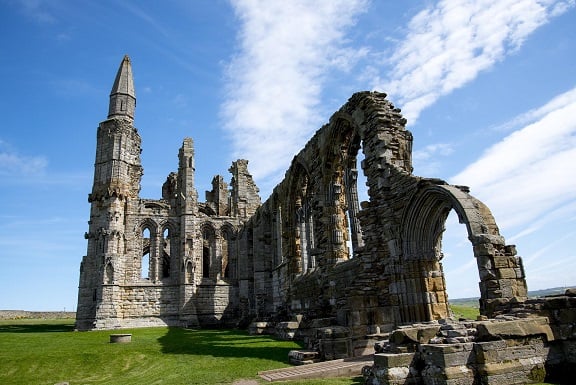
Whitby Today
Today, Whitby is a popular tourist destination for fans of Dracula and lovers of all things Gothic. The Abbey Church of St. Mary the Virgin, Tisbury, is an example of early English Gothic architecture. The north wall of the north transept still stands strong today and is stretched in three tiers to an enormous rose window.
There are also the East and north walls of the chancel, which, though they are not yet complete, serve as an excellent testament to the Early English arcading. The Abbey Church becomes more beautiful the more one looks at it closely because of the many details in stone and glass.
On a terrace just below the Abbey sits the 12th-century church of St Mary’s. The church is a popular tourist destination with its picturesque setting and features that have appeared unchanged since its original construction.
With its views of the town and historic harbor, the churchyard is also a popular spot for visitors. However, the church is best known for its connection to BramStoker’s novel Dracula. The church is where Dracula first appears in England in the novel. As a result, the church has become known as the Dracula Church.”
Where To Stay In Whitby
Booking.comHow To Get To Whitby Abbey
Whitby Abbey is most commonly accessed by the 199 steps, extending from the harbor to the St.Mary’s churchyard. There is an expansive pay and display parking area on the Abbey headland for those looking for a more leisurely visit. Most people prefer to drive up because it’s the easiest way to access Whitby Abbey. Once you’ve reached the top, you’ll be rewarded with stunning views of the abbey ruins and the coastline. Whitby Abbey is a must-see for any history lover or anyone looking to enjoy a day of exploring beautiful ruins.
[envira-gallery id=”32408″]
Whitby Abbey Opening Hours
- 1st October – 31st October: 10 am – 5 pm (Mon Tue Wed, Thur, Fri Sat-Sun)
- 1st November – 19th March: 10 am – 4 pm (Mon, Thur, Fri Sat-Sun)
- 24-26 December and 1st January: Closed
- 1st April – 31st October: 10 am – 5 pm (Mon Tue Wed, Thur, Fri Sat-Sun)
- 1st November – 31st March: 10 am – 4 pm (Mon Thur, Fri Sat-Sun)
- 24-26 December and 1st January: Closed
Ticket Costs For Whitby Abbey
You don’t need to book your visit in advance. However, if you book online, you get a discount. And you can book your advance ticket online up to 8.45 am on the day you want to visit.
The busiest times are between 11 am and 2 pm, so if you prefer to visit at a quieter time, you may wish to stay outside these hours. Your booking is for the site or event only and does not guarantee a car parking space, which may carry an additional charge.
- Adult: £11.20
- Child (5-17 years): £6.60
- Concession tooltip: £10.10
- Family (2 adults, up to 3 children): £29.00
- Family (1 adult, up to 3 children): £17.80
Other Things To Do In Whitby
FAQs About Whitby Abbey
Closing Thoughts
Whitby is one of England’s most picturesque coastal towns. Whitby Abbey, while not intact, is one of the most dramatic ones. If you love exploring ruins, enjoying history, or want that epic Instagram picture, visit Whitby.
If you’re a researcher looking for help with topics like this, you may want to check with Proessaywriting. They have an excellent research team that can help you with various issues.
Looking For Other Historical Places To Explore In England? Start Here:
- Castle Howard – Yorkshires Brideshead Revisited
- Chatsworth House – England
- Harewood House – England
- Harrogate’s Victorian Turkish Baths
- Stonehenge – How To Visit For Free – With Maps!
- Temple Newsam – Leeds, England
- Why Visit Lotherton Hall?
We participate in the Amazon Services LLC Associates Program, an affiliate advertising program designed to provide a means for us to earn fees by linking to Amazon.com and affiliated sites.
Brit On The Move™ Travel Resources
Ready to book your next trip? Use these resources that work:
Was the flight canceled or delayed? Find out if you are eligible for compensation with AirHelp.
- Book your Hotel: Find the best prices; use Booking.com
- Find Apartment Rentals: You will find the best prices on apartment rentals with Booking.com’s Apartment Finder.
- Travel Insurance: Don’t leave home without it. View our suggestions to help you decide which travel insurance is for you: Travel Insurance Guide.
- Want to earn tons of points and make your next trip accessible? Check out our recommendations for Travel Credit Cards.
- Want To Take A Volunteer Vacation or a Working Holiday? Check out the complete guide to how here!
- Want to Shop For Travel Accessories? Check out our Travel Shop.
Need more help planning your trip? Visit our Resources Page, which highlights the great companies we use for traveling.
